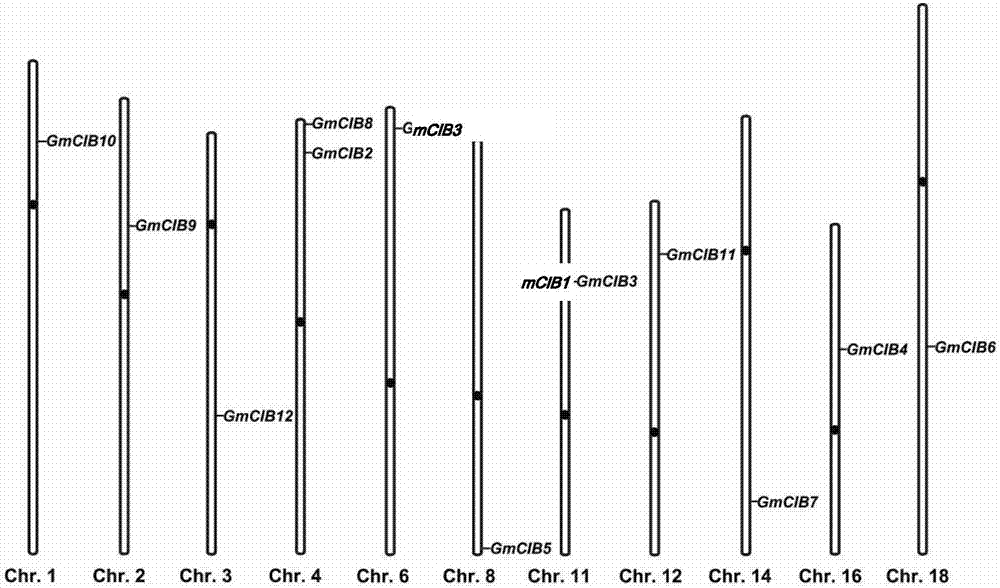Soybean gene GmCIB1and gene GmCRY2 and application thereof for regulating and controlling flowering and aging
A genetic and aging technology, applied to the soybean GmCIB1 gene and GmCRY2 gene and their application fields, can solve the problem of changing the sensitivity of soybean flowering to photoperiod
- Summary
- Abstract
- Description
- Claims
- Application Information
AI Technical Summary
Problems solved by technology
Method used
Image
Examples
Embodiment 1
[0151] Example 1. Cloning and expression pattern analysis of soybean CIB family genes
[0152] In 2008, the first blue-light-specific interaction protein with cryptochrome CRY2 was screened in Arabidopsis thaliana by yeast two-hybrid, named CIB1 (CRY-interacting bHLH1). CIB1 is a member of the bHLH family. In yeast cells, the interaction between CIB1 and CRY2 is specific to the wavelength of blue light, and the strength of the interaction increases with the increase of blue light intensity and illumination time. The structure-function study of CIB1 shows that its N-terminal domain can perform the function of interacting with proteins; while the C-terminal domain containing the bHLH motif participates in the interaction with DNA, thereby regulating target genes through cis-acting elements. In Arabidopsis, CIB1 increases the transcription level of FT by combining with the E-box (CANNTG) of the FT promoter region, thereby initiating plant flowering.
[0153] In this study, nine...
Embodiment 2
[0377] Example 2, Functional Research of GmCRY1&2 and GmCIB1 Regulating Flowering and Senescence
[0378] In this study, we will study the interaction between GmCRYs and GmCIB1 protein by yeast two-hybrid, BiFC and Co-IP methods; further obtain soybean genetically transformed lines with overexpression or RNAi knockout of GmCRY and GmCIB1 genes, and combine the phenotypes of transgenic offspring Analysis and ChIP experiments were used to find the downstream target genes of GmCIB1, so as to analyze the GmCIB signaling pathway through which GmCRY transmits blue light signals in soybeans, laying a foundation for in-depth research on soybean photoperiod and leaf senescence regulation and germplasm innovation.
[0379] 1. Materials and methods
[0380] 1.1 Materials
[0381] 1.1.1 Plant material
[0382] The soybean variety is Kennong 18, and the tobacco variety is Nicotiana Benthamiana.
[0383] 1.1.2 Strains and plasmids
[0384] The strains of Agrobacterium and Escherichia co...
PUM
 Login to View More
Login to View More Abstract
Description
Claims
Application Information
 Login to View More
Login to View More - R&D
- Intellectual Property
- Life Sciences
- Materials
- Tech Scout
- Unparalleled Data Quality
- Higher Quality Content
- 60% Fewer Hallucinations
Browse by: Latest US Patents, China's latest patents, Technical Efficacy Thesaurus, Application Domain, Technology Topic, Popular Technical Reports.
© 2025 PatSnap. All rights reserved.Legal|Privacy policy|Modern Slavery Act Transparency Statement|Sitemap|About US| Contact US: help@patsnap.com



